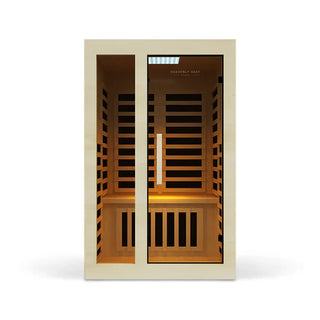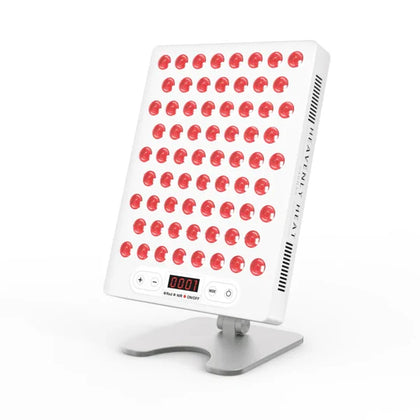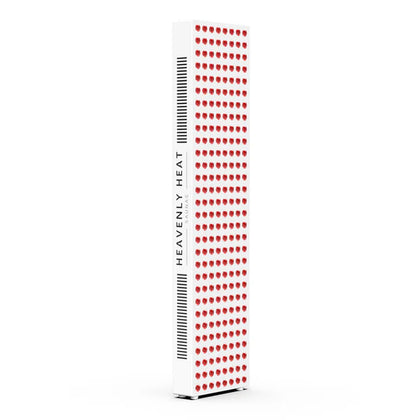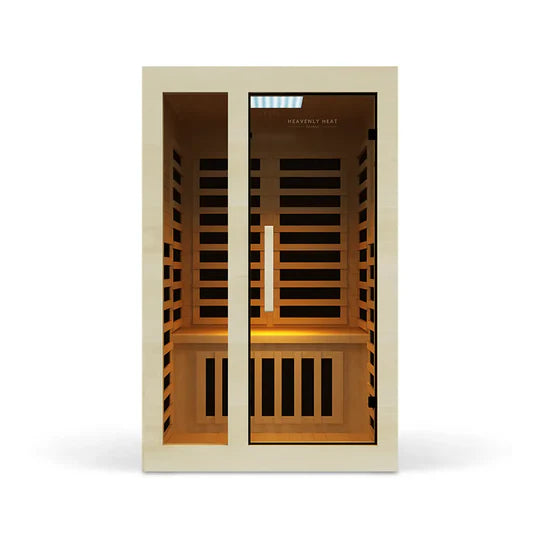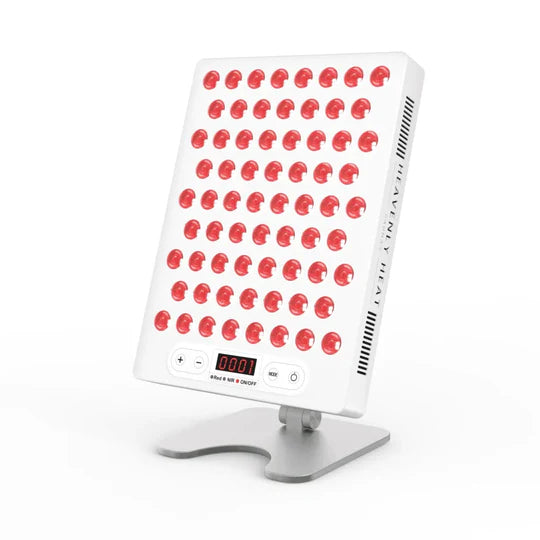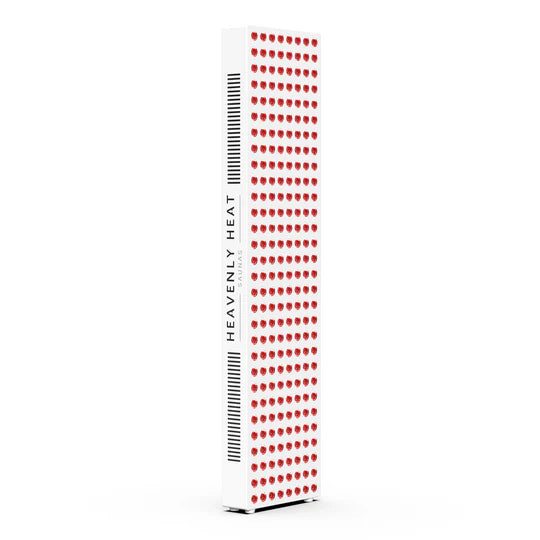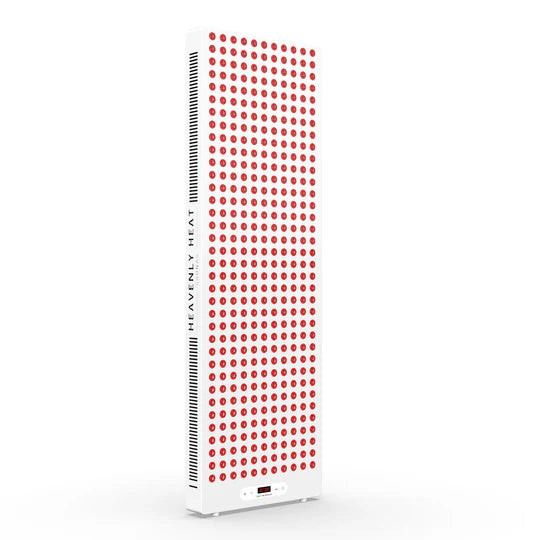Does Sauna Help Sore Muscles?

Aching, stiff, and tender muscles after a workout? Muscle soreness, often delayed onset muscle soreness (DOMS), brings pain, fatigue, swelling, and limited movement that can derail your fitness goals.
Ignoring it can mean slower recovery, poor performance, and even injury. But what if a sauna could soothe the pain and speed healing? Let’s dive into whether heat holds the secret to relief.
Table of contents
Key Takeaways
Understand Muscle Soreness: Soreness occurs due to microtears in muscle fibers, especially after intense workouts.
Sauna Promotes Recovery: Heat from a sauna boosts blood circulation, helping muscles recover faster.
Inflammation Relief: Sauna therapy reduces muscle inflammation and eases swelling, aiding the healing process.
Sauna Timing Matters: Use the sauna 30-60 minutes post-workout for optimal muscle recovery benefits.
Hydration is Key: Always stay hydrated before and after sauna use to prevent dehydration and support recovery.

The Science Behind Saunas and Sore Muscles
Scientific research supports the use of saunas as an effective method to reduce muscle soreness and enhance recovery.
A study published in the Asian Journal of Sports Medicine (2015) found that individuals who used a sauna before performing eccentric wrist exercises experienced significantly less range of motion loss, grip strength reduction, and wrist extension strength impairment compared to a control group.
These findings suggest that pre-exercise sauna use may protect muscles from performance deficits linked to exercise-induced muscle damage.
A comprehensive 2021 meta-analysis in ScienceDirect also highlighted that heat therapy, particularly within one hour after exercise, can significantly reduce delayed-onset muscle soreness (DOMS) both within 24 hours and beyond.
Among thermal interventions, hot packs showed the most pronounced effect. Together, these findings suggest that sauna exposure, whether before or after exercise, can aid in minimizing soreness, preserving strength, and accelerating muscle recovery.
Why Do Muscles Feel Sore After Exercise?
Microtears in Muscle Fibers
- Microtears in Muscle Fibers Cause Soreness: Muscle soreness after exercise occurs due to tiny tears in the muscle fibers that happen during intense workouts.
- Intense Exercise Creates Small Tears: When muscles are pushed harder than usual, like in weightlifting or high-intensity exercises, it creates small tears in the fibers.
- Muscle Repair Leads to Strength Gain: The body repairs these microtears, making muscles stronger over time, which is why soreness can be a sign of progress.
Delayed Onset Muscle Soreness (DOMS)
DOMS refers to the muscle pain and stiffness that shows up 12 to 48 hours after a tough workout.
It typically happens after trying new exercises or pushing your body harder than usual. It affects about 50–80% of active adults, especially after intense or unfamiliar workouts.
The soreness you feel is connected to microtears and inflammation in the muscle tissue.
Lactic Acid Build-Up and Its Role
Lactic acid is often mistakenly blamed for post-workout soreness, but it’s not the main cause.
During intense exercise, lactic acid builds up as the body switches to anaerobic respiration, a process where energy is produced without oxygen during short bursts of high-intensity activity but it’s cleared from muscles fairly quickly.
The soreness you feel days later is more likely due to muscle microtears and inflammation.
Inflammation and Swelling in Muscle Tissue
After exercise, inflammation occurs as part of the body’s natural healing process. The tiny tears in muscle fibers trigger an immune response that brings increased blood flow to the area, causing swelling and pain. This inflammation is necessary for muscle repair and recovery.
Eccentric Movements and Muscle Stress
Eccentric muscle contractions occur when muscles lengthen under tension, like when lowering weights or running downhill.
In these contractions, the muscle lengthens as the resistance exceeds the force it produces.
These movements cause more stress on muscles compared to concentric contractions, leading to greater muscle damage and soreness.
Recovery Time and Muscle Adaptation
Recovery time is essential for muscle repair and growth after intense exercise. During recovery, the body heals microtears in muscle fibers, strengthening them. Proper rest and nutrition help speed up recovery and support muscle adaptation.
The Role of Hydration and Nutrition in Muscle Soreness
Hydration and nutrition are key to reducing muscle soreness and speeding up recovery.
Water helps flush out toxins and lactic acid, while electrolytes, charged minerals like sodium and potassium, help balance fluids, aiding muscle function and recovery.
Protein also aids in muscle repair. A balanced post-workout meal helps minimize soreness and accelerates the repair process.
What Is Sauna Therapy and How Does It Work?
- Sauna Therapy Uses Heat to Relax the Body: Sauna therapy uses heat to relax and soothe the body, helping to increase circulation, which speeds up muscle recovery and reduces soreness.
- Better Blood Flow Helps Muscles Recover Faster: The heat promotes better blood flow, delivering oxygen and nutrients to muscles, aiding in faster recovery after exercise.
- Sweating Helps Relax Tight Muscles: While sweating occurs during sauna use, it’s essential to know that there’s no scientific evidence to support the idea that sweating detoxifies the body. However, sweating helps relax tight muscles and ease muscle pain and stiffness.
- Increased Circulation Removes Waste from Muscles: The increased circulation helps remove metabolic waste like lactic acid that builds up after exercise, supporting the body’s healing process.
How Heat from Sauna Effects Sore Muscles?
Boosts Blood Circulation, Delivering Oxygen and Nutrients to Sore Muscles Faster
- Heat makes blood move faster to your sore muscles: When your body heats up in the sauna, your blood vessels open wider. This lets blood flow more freely, helping carry oxygen and nutrients straight to the sore areas so they can heal faster.
- More blood flow helps clean out muscle waste: The extra circulation doesn’t just bring in good stuff, it also takes away the bad. It helps flush out lactic acid and other waste that builds up after a workout, reducing soreness and stiffness.
- Using the sauna often keeps your muscles healing better: Doctors recommend going into the sauna for 15–20 minutes, several times a week. Doing this regularly keeps the blood flow benefits going strong, which means your sore muscles keep getting support.
- Steam rooms feel softer but still help sore muscles: Steam rooms don’t get as hot as dry saunas, but they use 100% humidity. This moist heat is gentler and can still help relax your muscles and ease tension.
- Dry saunas push heat harder for quick relief: Dry saunas are hotter than steam rooms and give a stronger heat. That stronger heat pushes blood flow faster, which can help bring quicker comfort to sore, tired muscles.
Relieves Muscle Tension by Relaxing Tight and Stiff Muscles
- The heat helps muscles loosen up naturally: The warmth from the sauna gets deep into the muscles, helping them soften and let go of built-up tension. This makes your body feel more at ease, especially after physical effort or a long, stressful day.
- Better blood flow makes muscles relax faster: When you're in the sauna, the heat improves your blood circulation. This brings more oxygen and nutrients to your sore muscles, helping them calm down and recover quicker from tightness or overuse.
- Using sauna and massage together gives stronger relief: If you add a massage after sitting in the sauna, your muscles are already warmed up and more relaxed. This makes the massage work even better in easing tight areas and giving full relief.
Speeds Up Muscle Recovery by Enhancing Blood Flow and Healing Process
One of the primary benefits of sauna use is its ability to accelerate muscle recovery. The heat helps relax muscles, reduce soreness, and improve circulation.
By boosting blood flow, the body can repair muscle fibers more quickly and flush out metabolic waste products that may build up after exercise.
Reduces Inflammation by Improving Circulation and Easing Muscle Swelling
- Heat improves blood flow, which helps swollen muscles feel better: When you sit in a sauna, your body heats up and blood moves more easily through your muscles. This helps carry away waste and bring in fresh nutrients, which can reduce swelling and soreness.
- Better circulation speeds up how fast your muscles heal: The extra blood flow from the heat gives your body what it needs to heal muscle damage faster. This means less pain and quicker recovery after workouts or strain.
- Sauna heat tells your body to release special healing proteins: The heat encourages your body to make something called heat shock proteins. These are natural helpers that lower harmful inflammation and protect your muscles at a deep level.
- Regular sauna use helps fight muscle inflammation over time: Using a sauna often can make these healing effects stronger. It helps your body stay ready to fight swelling and keep muscles and joints healthier in the long run.
Stimulates Endorphin Release, Naturally Reducing Pain and Improving Mood
Saunas help release endorphins, which act as natural painkillers. The heat from a sauna stimulates the release of these mood-boosting chemicals, which help reduce pain and improve overall well-being.
Endorphins are hormones released during stress or pleasure, helping to relieve pain and boost mood.
Enhances Flexibility by Warming Muscles for Better Stretching and Mobility
Sauna heat improves flexibility as it warms up muscles, making them more pliable and easier to stretch.
Heat helps loosen stiff muscles and joints, reducing the risk of injury. When muscles are warmed by the sauna’s heat, they become more elastic, improving mobility and range of motion.
Promotes Mental Relaxation by Reducing Stress and Calming the Mind
Saunas not only relax your body but also promote mental calmness. The warmth helps reduce stress, creating a sense of tranquility, which is beneficial for mental well-being.
Other Therapies that help with Sore Muscles
Massage Therapy
Massage therapy really does help sore muscles feel better. When you push your body during a workout, especially if it’s something new, your muscles can get tiny tears that cause soreness, tightness, and swelling.
That’s called delayed-onset muscle soreness, or DOMS. Massage works by using pressure to relax tight muscles, improve blood flow, and warm up the area, which helps your body heal faster.
It also lowers stress and makes you feel more relaxed overall. One study found that people who got a massage three hours after working out had 30% less muscle soreness and less swelling compared to those who didn’t.
Another review explained that massage helps by loosening stiff muscles, boosting circulation, and calming the nerves.
So if your muscles feel sore and stiff after exercise, a good massage might be just what you need to speed up recovery and feel better faster.
Cold Therapy (Ice Baths or Cryotherapy)
Cold therapy like ice baths or cryotherapy helps sore muscles by cooling your body down, slowing blood flow, and calming inflammation.
This gives your muscles a break and helps them heal faster after intense workouts. One large review found that people who used cold-water immersion after exercise felt much less soreness, especially 24 to 96 hours later.
Another study pointed out that cold therapy also helps fight off overall muscle fatigue. So if your muscles feel tight, swollen, or just worn out, cold therapy can give them the reset they need to bounce back faster.
Red Light Therapy
Red light therapy helps sore muscles by sending gentle light into your muscle cells, giving them a boost of energy to heal faster and feel less sore.
It can lower inflammation, ease pain, and even help muscles grow after a workout. In one study , a pair of identical twins did the same workout, but only one used red light therapy, the one who did had stronger muscles, less soreness, and better recovery.
Another review of 46 studies found that this therapy helped reduce muscle damage and made recovery quicker for both athletes and beginners.
Epsom Salt Baths
After a tough workout, your muscles can feel tight, tired, and sore. Taking an Epsom salt bath is a simple way to help them relax.
Epsom salt is packed with magnesium, which your body uses to calm muscle tension and lower inflammation.
When you soak in warm water with Epsom salt, your skin absorbs the magnesium, helping your muscles feel looser and less achy.
According to the Journal of Clinical and Diagnostic Research (2024), Epsom salt’s muscle-relaxing effects make it a great choice for easing soreness and speeding up recovery.

Is Infrared Sauna More Effective for Sore Muscles?
- Infrared heat accelerates muscle healing: Infrared saunas are gaining popularity for muscle recovery. The infrared heat penetrates deeper into tissues, providing a more intense, targeted heat that accelerates healing.
- Infrared technology heats muscles, not the air: Unlike traditional saunas, which heat the air around you, infrared saunas use Far Infrared Technology (FIR) to directly heat your muscle tissues and internal organs, reaching up to 1.5 inches deep.
- Focused heat improves circulation and reduces inflammation: This focused heat allows for more effective muscle recovery by promoting circulation, reducing inflammation, and speeding up the healing process.
- Infrared saunas reduce soreness and boost strength: In one study, male basketball players who used an infrared sauna after intense strength and plyometric exercises experienced less muscle soreness and retained more explosive strength the next day compared to those who only rested. The sauna group also reported feeling more recovered overall.
- Infrared heat enhances post-exercise recovery: This suggests that infrared heat plays a powerful role in post-exercise recovery, helping athletes bounce back faster and feel better both physically and mentally.
Do Athletes Use Sauna for Muscle Soreness Relief?
- Sauna Use Helps Build Muscle Strength and Power: Muscle strength and power seem to increase after sauna use. If you’re looking to build strength and power, saunas can help with that," says Dr. Ai Mukai, a physical medicine and rehabilitation specialist at Texas Orthopedics. This added benefit makes sauna sessions particularly appealing to athletes aiming to improve performance.
- Saunas Speed Up Muscle Recovery After Workouts: Many athletes use saunas after intense workouts to help their muscles recover faster. The heat increases blood flow, which brings more oxygen and nutrients to tired muscles and helps remove waste like lactic acid.
- Sauna Reduces Muscle Inflammation and Soreness: Sauna use also helps reduce muscle inflammation, easing soreness and supporting faster recovery.

Should You Use Sauna Before or After a Workout?
- Relax Your Muscles and Speed Up Recovery After a Workout: Using a sauna after your workout helps relax your muscles, reduce soreness, and supports faster recovery.
- Short Pre-Workout Sauna Sessions Can Boost Endurance: A brief sauna session before exercising (5–10 minutes) can gently raise your heart rate, boost circulation, and give your endurance a light push.
- Avoid Overdoing It Before a Workout to Preserve Energy: Spending too much time in the sauna before intense exercise can leave you feeling tired or drained, which might affect your performance.
When Should You Use Sauna Post-Exercise for Best Results?
- Allow Time to Cool Down Before Sauna: After exercising, it's important to allow your body 10 to 20 minutes to cool down. This helps your heart rate return to normal, making it safer and more effective to use the sauna afterward.
- Use Sauna Within 30 to 60 Minutes After Strength Training: The best time to use a sauna is within 30 to 60 minutes after strength training. This is when your muscles are most in need of relaxation and recovery, allowing you to get the most out of the sauna session.
How Long Should You Stay in the Sauna for Muscle Relief?
Most people find that 15 to 20 minutes is the sweet spot for easing sore muscles without overdoing it.
Beginners should start with 5 to 10 minutes, especially if they’re not used to the heat. For more intense workouts, you can stay in a bit longer, but avoid exceeding 30 minutes.
Just listen to your body, if you start feeling lightheaded, short of breath, or dizzy, that’s a clear sign it’s time to cool down and step out.
How Often Should You Use a Sauna to Ease Muscle Pain?
Using the sauna 2-3 times a week is generally enough to see benefits. While daily sauna use can help with muscle recovery, it may not be necessary unless you're dealing with intense soreness.
For best results, combine sauna use with other recovery techniques, like stretching or hydration.
What’s the Ideal Temperature for Muscle Recovery?
The ideal sauna temperature for muscle recovery is between 100°F and 120°F (37°C to 49°C). This range provides the right balance for muscle relaxation and circulation.
The best temperature for post-workout recovery is around 104°F (40°C), which helps improve blood flow and speeds up muscle recovery.
Is Sauna Safe to Use with Sore or Tight Muscles?
- Saunas Can Help Sore Muscles Relax: Using a sauna can help relax sore or tight muscles by increasing blood flow and easing stiffness.
- Avoid Saunas for Inflamed Muscles: If muscles are inflamed, heat from the sauna might make the inflammation worse, so it's best to avoid using it.
- Stay Hydrated Before and After: It’s important to drink plenty of water before and after using the sauna to avoid dehydration and help muscle recovery.
- Saunas Don’t Burn Significant Calories: While saunas increase your heart rate, the calorie burn is minimal compared to actual exercise, so they shouldn’t be relied on for weight loss.

Who Should Avoid Using Sauna for Muscle Relief?
Individuals with Cardiovascular Conditions Should Avoid Saunas Due to Heat Stress Risks
- Sauna heat puts extra pressure on the heart: The high temperature in a sauna makes the heart work harder. For people with heart problems, this added stress can be dangerous and increase the chance of heart-related issues.
- People with high blood pressure can feel dizzy or faint: If you have high blood pressure, the sudden changes caused by sauna heat may lower it too quickly when you leave, leading to dizziness or fainting spells.
- Having a past heart attack means extra risk in a sauna: If you’ve had a heart attack before, the strain from sauna heat can put you at risk of another serious heart event. It’s not safe without a doctor’s advice.
- Heart patients should always talk to a doctor first: Anyone with heart or blood vessel problems should check with their doctor before using a sauna. It’s the safest way to know if sauna use is okay for your condition.
- Sauna might help the heart in the long run but only with care: Even though saunas can be risky at first, some studies say regular use might lower blood pressure and cholesterol. But this is only helpful if your doctor says it’s safe for you.
People with Skin Conditions or Sensitivities May Experience Irritation or Burns
- Skin with Conditions Is at Higher Risk: For individuals with eczema or other existing skin issues, sauna heat can worsen rashes, inflammation, and overall skin discomfort. These conditions make the skin more reactive to high temperatures, increasing the risk of flare-ups.
- Sensitive Skin May Burn Easily: People with naturally sensitive skin are more prone to irritation or even mild burns in the intense heat of a sauna. The high temperature may push the skin beyond its comfort zone, leading to redness or soreness.
- Heat Sensitivity Increases Irritation: Those with heat-sensitive skin might experience stronger reactions in a sauna. Prolonged exposure to elevated temperatures can aggravate the skin, especially in those already predisposed to sensitivity.
- Sauna Steam Can Worsen Skin Problems: Steam from saunas may further inflame delicate or damaged skin. The moisture combined with heat can cause discomfort, pain, or flare-ups in people with underlying skin issues.
- Always Consult a Dermatologist Before Use: If you have any type of sensitive or compromised skin, it's best to speak with a dermatologist before using a sauna. Professional advice helps reduce the risk of worsening skin conditions.
Pregnant Women or Those Trying to Conceive Should Avoid Saunas for Safety
- Saunas can be dangerous for pregnant women: Using a sauna while pregnant isn’t safe because the high heat can raise the risk of miscarriage, especially in the early stages.
- Heat from saunas may harm unborn babies: Too much heat can affect how the baby grows inside the womb, possibly leading to serious health problems.
- Saunas may lower your chances of getting pregnant: If you’re trying to have a baby, the heat from a sauna might reduce your fertility by interfering with your body’s natural functions.
- It’s safest to ask a doctor before using a sauna: Whether you're pregnant or planning to get pregnant, it’s best to check with a doctor before using a sauna to avoid any risks.
People Taking Certain Medications May Face Risks from Heat and Dehydration
- Certain Medications Can Make Sauna Use Riskier: Some medications can cause your body to react poorly to heat. Diuretics, for example, can lead to dehydration, which is dangerous in the sauna. Medications like antidepressants and painkillers can also make it harder for your body to control temperature.
- Medications Can Increase Dehydration in Saunas: If you're on medications that affect fluid balance, such as diuretics, you're more likely to become dehydrated in the sauna. Dehydration in a hot environment can make it harder for your body to regulate heat and lead to serious risks.
- Watch for Warning Signs Like Dizziness or Thirst: While in a sauna, be on alert for symptoms like dizziness, confusion, or excessive thirst. These signs indicate that your body might be overheating or dehydrated, and you should leave the sauna immediately to avoid further risks.
- Always Check with Your Doctor Before Sauna Use: If you're taking medications that could interact with heat, it's important to get your doctor's approval before using a sauna. They can guide you on the safest approach to avoid any health risks.
Those with Respiratory Issues May Find Sauna Air Difficult to Breathe
- Breathing Can Be Challenging in Saunas for Those with Respiratory Conditions: For individuals with lung conditions like COPD or asthma, breathing in a sauna can be challenging. The heat and humidity may cause chest tightness or trigger asthma attacks.
- Hot, Humid Air May Irritate the Lungs and Make Breathing Harder: The hot, humid air in saunas can irritate the lungs and airways, making it harder to breathe.
- Always Check with Your Doctor Before Using a Sauna: If you have respiratory issues, it’s best to consult your doctor before using a sauna. Always be cautious and aware of how your body reacts.
- Steam and Heat Can Worsen Asthma Symptoms: For those with asthma, the steam and heat might worsen symptoms, leading to difficulty breathing.
Individuals with Low Blood Pressure May Experience Dizziness or Fainting in Saunas
- Low Blood Pressure Can Cause Dizziness in Saunas: For those with low blood pressure, saunas can cause dizziness, fainting, or lightheadedness. The heat may cause blood vessels to dilate, leading to a drop in blood pressure that makes you feel weak or faint.
- Leave the Sauna Immediately If You Feel Dizzy: If you experience dizziness or feel like you're going to pass out, it’s important to leave the sauna immediately. This helps prevent any serious issues and keeps you safe.
- Staying Hydrated Helps Prevent Low Blood Pressure Symptoms: To avoid complications, make sure to stay hydrated during your sauna session. Proper hydration can help minimize the risk of dizziness and fainting caused by low blood pressure.
- Consult Your Doctor Before Using a Sauna with Low Blood Pressure: If you have hypotension, it’s best to consult a healthcare provider before using a sauna. They can guide you on whether sauna use is safe and how to protect your health.
Anyone Dehydrated or Prone to Overheating Should Avoid Saunas for Health Safety
- Dehydration Increases Sauna Risks: If you're dehydrated, saunas can be dangerous. Dehydration makes it harder for your body to cool itself, increasing the risk of heat stroke in a hot sauna environment.
- Heat Can Overwhelm Your Body: Sauna heat can cause overheating, especially for people with a history of heat-related illnesses. This can lead to dizziness, confusion, or heat exhaustion.
- Exit Immediately if You Feel Unwell: Listen to your body when using a sauna. If you start feeling dizzy or uncomfortable, leave the sauna to avoid further health risks.
FAQs
Can Sauna Use Cause Muscle Soreness or Fatigue if Overused?
Overusing a sauna can lead to muscle fatigue, especially when the body isn't given enough time to recover. Prolonged sauna sessions may also lead to dehydration, making muscles more prone to fatigue.
Does Sauna Help with Chronic Muscle Pain or Only Post-Exercise Soreness?
Sauna therapy offers relief for both chronic muscle pain and post-exercise soreness. It helps relax muscles, reduce tension, and improve blood flow, which can alleviate long-term discomfort.
Can Using the Sauna Improve Flexibility Over Time?
Regular sauna use can improve flexibility over time by warming muscles, making them more pliable and easier to stretch.
How Does the Sauna Affect the Healing of Muscle Injuries Beyond Soreness?
Sauna use can aid in muscle recovery after an injury by improving blood circulation and promoting faster healing through enhanced nutrient delivery and reduced inflammation.




